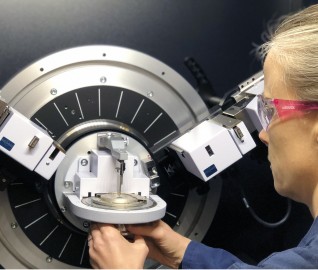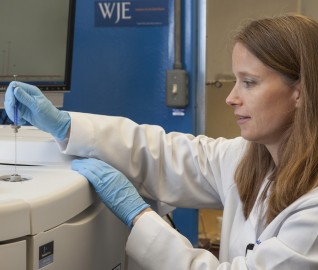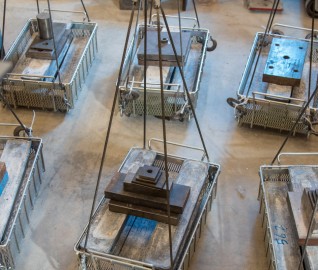This test method provides standardized procedures for obtaining and testing specimens to determine the compressive, splitting tensile, and flexural strength of in-place concrete. Generally, test specimens are obtained when doubt exists about the in-place concrete quality due either to low strength test results during construction or signs of distress in the structure. Another use of this method is to provide strength information on older structures. Concrete strength is affected by the location of the concrete in a structural element, with the concrete at the bottom tending to be stronger than the concrete at the top. Core strength is also affected by core orientation relative to the horizontal plane of the concrete as placed, with strength tending to be lower when measured parallel to the horizontal plane. These factors shall be considered in planning the locations for obtaining concrete samples and in comparing strength test results. The strength of concrete measured by tests of cores is affected by the amount and distribution of moisture in the specimen at the time of test. There is no standard procedure to condition a specimen that will ensure that, at the time of test, it will be in the identical moisture condition as concrete in the structure. The moisture conditioning procedures in this test method are intended to provide reproducible moisture conditions that minimize within-laboratory and between-laboratory variations and to reduce the effects of moisture introduced during specimen preparation. The measured compressive strength of a core will generally be less than that of a corresponding properly molded and cured standard cylinder tested at the same age. For a given concrete, however, there is no unique relationship between the strengths of these two types of specimens. The relationship is affected by many factors such as the strength level of the concrete, the in-place temperature and moisture histories, the degree of consolidation, batch-to-batch variability, the strength-gain characteristics of the concrete, the condition of the coring apparatus, and the care used in removing cores.
WJE laboratories are accredited by AASHTO (R18) and ANAB (ISO/IEC 17025) to perform testing standard ASTM C42 for Obtaining and Testing Drilled Cores and Sawed Beams of Concrete.
Contact us to learn more.
Keywords
C42 - Compressive Strength - Concrete - Flexural/Bend Strength - Tensile Strength - Test Specimens and Test Engines
ICS CODE
91.100.30 (Concrete and concrete products)
UNSPSC CODE
30111500 (Concrete and mortars)
CITATION FORMAT
ASTM C42 / C42M-18a, Standard Test Method for Obtaining and Testing Drilled Cores and Sawed Beams of Concrete, ASTM International, West Conshohocken, PA, 2018,
www.astm.org
 John E. Pearson, Principal and Laboratory ManagerWJE Northbrook MORE >People | John E. Pearson, Principal and Laboratory Manager
John E. Pearson, Principal and Laboratory ManagerWJE Northbrook MORE >People | John E. Pearson, Principal and Laboratory Manager WJE's Janney Technical Center (JTC) provides advanced testing and forensic capabilities to... MORE >Labs | Janney Technical Center
WJE's Janney Technical Center (JTC) provides advanced testing and forensic capabilities to... MORE >Labs | Janney Technical Center Our materials scientists provide comprehensive consulting services for the evaluation and... MORE >Services | Materials Evaluation and Testing
Our materials scientists provide comprehensive consulting services for the evaluation and... MORE >Services | Materials Evaluation and Testing WJE was founded on a spirit of innovation—that everything can be improved and that... MORE >Services | Product Development, Evaluation, and Testing
WJE was founded on a spirit of innovation—that everything can be improved and that... MORE >Services | Product Development, Evaluation, and Testing


































